The pet industry is growing rapidly, with people in the UK spending more than £8 billion per year on their pets.
The industry as a whole is easy to enter as a small business owner, with expenses varying from minimal to a bit pricier, depending on what sector you choose and which market segment you aim at.
Once you’ve drawn up a business plan and have good quality pet business insurance, you’ll be able to grow your business as large as you like – or keep it as a small boutique. The choice is yours.
Read on for 12 pet business ideas that you can start...
Dog walker
Similar to dog training, becoming a dog walker has no set license or qualifications requirements to get started.
Getting a dog-related qualification goes a long way to attracting customers – a certificate in animal behavior or first aid, for instance, lets customers know that you take their beloved pooch’s care seriously.
You’ll need spare harnesses and leads, portable water bowls, treats, and poo bags for cleaning up after the dogs. You’ll need to be comfortable with all weather conditions, okay with muddy pawprints and doggy kisses, and have a genuine liking for dogs.
Some authorities restrict the number of dogs you can walk at the same time, so make sure you check on this before you take your charges out in the area.
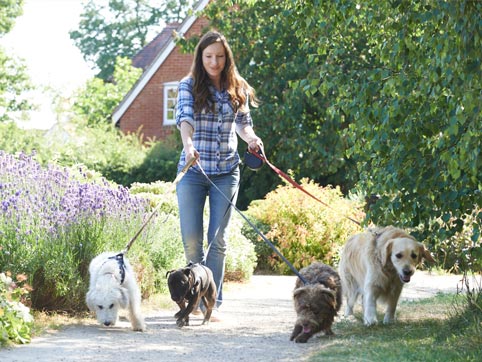
Pet taxi
Pet taxis are a rapidly growing business in the UK. As of 2022, they’re only available in certain large cities, so there is plenty of room for growth here. Busy professionals who would otherwise struggle to get their pets to regular grooming and vet appointments have greeted this relatively new service with open arms.
Another market to consider is people who for one reason or another don’t have their own vehicle to transport animals to their appointments, and don’t want the stress of animal wrangling on public transport.
You can choose to go the luxury pet chauffer route if your coverage area will supply enough demand or stick to a more budget-friendly option with fewer frills.
You’ll need a vehicle that can safely and comfortably transport the animals, with secured crate space and safety equipment like a seat belt harness.
If you already have a vehicle that can be used, it’s going to eliminate a large upfront cost. Just be sure to take wear and tear on the car as well as fuel costs into account when you set your prices.
Dog trainer
Becoming a dog trainer in the UK doesn’t need any formal qualifications but signing up for a course such as those run by a training and education provider like The Institute of Modern Dog Trainers (IMDT) will make you far more competent and far more attractive to potential clients who will have much more confidence in you. These organisations work with everyone from beginners to experts.
You don’t need special equipment or vehicles, but bear in mind that you’ll need to be able to cope with outdoor work in the UK’s potentially rough weather.
A huge amount of dog training involves teaching the owners how to maintain that training at home. You’ll need endless patience, time, and a genuine liking for both dogs and humans.
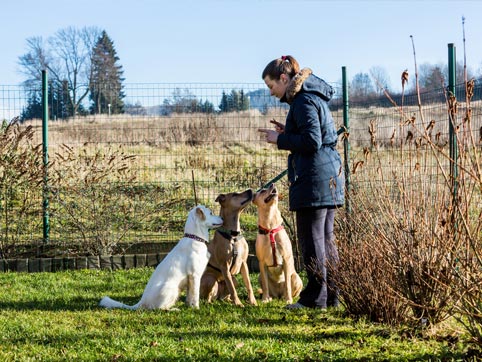
Dog Daycare
Doggy Daycare is one of the few pet businesses that are heavily regulated in the UK. You’ll need to hold and display a license granted by your local authority and be prepared to have an annual inspection on top of the pre-licensing inspection.
Your licence conditions will set out how many animals you can care for, will state how you look after the dogs and their needs, and require you to keep up-to-date records of the animals in your care.
The requirements can vary depending on your local authority, so make sure you check exactly what’s needed before you apply for your licence.
Licence breaches can carry a stiff penalty, and while the new framework is still being examined and debated by the doggy care community, it’s very important that you know exactly what you can and can’t do under your local authority’s requirements.
Have a chat with local vets and officers before you set up.
Pet Sitter
Becoming a pet sitter is one of the least expensive ways to start a pet business. No qualifications are needed, although again, animal-related qualifications will reassure and attract customers.
There are a number of pet sitting apps available to sign up to, for both customers and sitters. Most will require that you’re over eighteen and pass a CRB check.
Pet sitting can be done at the owner’s property or at yours. If you decide to pet sit at your home, make sure you’ve puppy-proofed the house, and remember it’ll take time for the dog to get used to you.
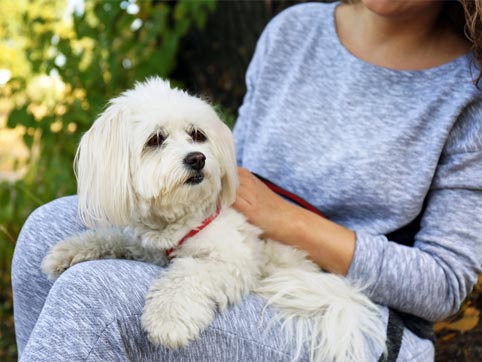
Pet Groomer
Becoming a pet groomer requires a bit more of a financial outlay. You can do pet grooming courses through a variety of institutions, and if you have a spare room, you can set up and work from home, or choose to rent a shop front.
Most of your initial outlay will come from your equipment. Invest in the best quality equipment you can afford, and make sure it’s all insured.
Once you start getting recommendations and regular bookings, you’ll be able to cover your equipment costs and expand.
You can choose whether you’re going to stick strictly to dogs, or if you’re willing to work on cats as well. Cats are a lot harder to get through the grooming process than dogs, and capable of doing a lot of damage with their feet as well as their mouths, so make sure your training covers handling them safely if you go this route.
Dog Breeder
Starting a small home business as a dog breeder could be something to think seriously about but does need some careful thought and preparation before starting.
Large breeds need a lot more space and exercise, so keep in mind the size of the dog and your available property before you decide.
Different breeds can have very different temperaments and requirements, and every dog breed has potential health and behaviour issues you need to be aware of before starting your programme.
Also beware of choosing an 'in vogue' breed as it can quickly go out of fashion. This would be very detrimental to your business.
Top tip:
Visit the Kennel Club website for an easy overview of the dogs you are thinking about, including potential temperament and health issues.
Once decided on a breed, invest in the best bitch (dam) you can in order to produce the best offspring. You'll want to choose a dog that is a good example of its breed and also free of genetic faults and illnesses. A good temperament is also key because it will be more likely that the pups will be similar. When arranging for a cover stud, you will need to select a dog using the same criteria.
In the UK, a breeder who breeds three or more litters in a year and sells the puppies needs a licence so check with your local council and make sure you meet all of the licence requirements – any buyer is going to want to see your licence before paying a considerable amount for a puppy, and display your licence prominently to greet your customers when they visit your property.
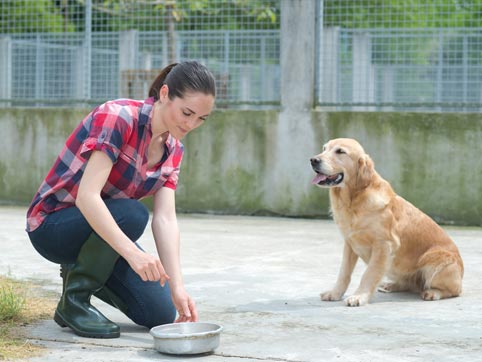
Pet photography
If you’ve got a talent for photography and a love of animals, pet portraits might be the ideal job for you.
Most pet owners will have lots of pictures on their smart phones – but having a nice, professional-quality portrait done is often worth it to doting pet owners.
Your main costs will be good quality equipment, and a studio with dark room so that you can develop your film. Dark rooms don’t have be large – some small photographers manage quite well with a converted cupboard, for instance – since all you need is space for developing trays, a sink, and a place to hang the pictures after rinsing. As long as it’s light-proof, it does the job.
You’ll need patience. Animals that aren’t used to being photographed can be intimidated by the stranger pointing a weird object at them as well as the flash, and be comfortable dealing with both animals and their owners. Be prepared for accidents as well, especially with very young, old, or nervous animals. Keep a mop and bucket handy, just in case.
Unless you do a lot of outside shoots though, you won’t need to worry about the weather.
If you already have a photography business, adding pet photography on as a service can be a nice income stream.
Mobile Pet Groomer
A mobile pet groomer has all of the items you’d expect in a standard grooming parlour, except it’s been sized and specially fitted into a van that travels from area to area.
In this case, you won’t have the monthly shop rent overhead, but you will have wear and tear on your vehicle.
You can either buy a new or second-hand pet grooming van or convert one that you already own.
Decide on your coverage area and set up a weekly schedule that you can hand out to anyone interested while you’re parked up.
Most dogs in the UK have a grooming visit every four to six weeks. That’s a lot of return customers that can’t always get to a grooming parlour, and will be more than happy if the grooming parlour comes to them.
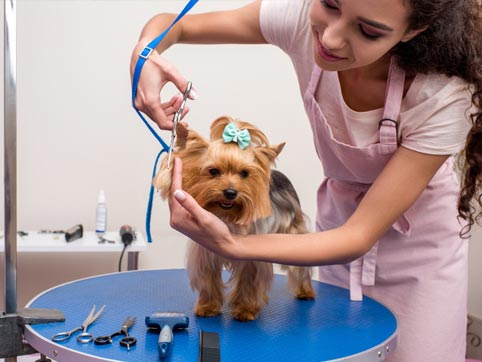
Pet outfits
One in five people in the UK spend at least £20 a month on pet outfits. That’s a massive market for someone with an eye for design and a little ability with a sewing machine.
Pet outfits range from the simple, like bandanas and coat harnesses, to elaborate Halloween outfits.
In winter, owners tend to make sure their short-haired breeds don’t struggle with the cold by investing in jumpers and coats, and summer brings out a range of cooling jackets and bandanas to prevent overheating.
Offshoots of this are the puppy cooling pads and chemical-free heating pads available online and in most pet stores, as well as fashionably covered dog beds and blankets.
Your investment here is going to be time, a sewing machine, materials – and possibly sewing lessons, if this is a new skill set.
Home-made dog treats
Statista shows that in 2018, dog treats were worth 462 million pounds in the UK. That is a very large pie, and it’s going to get larger. It’s also a very regulated pie, with registration requirements before you can start selling.
Any sort of commercial pet food, including treats, is regulated by the Food Standards Agency (FSA), and you’ll need to register your business with the local Trading Standards Office (TSO), which will assess any food production at your property and decide whether it gets an Approval (A) or Registration (R) rating.
If you have anything in your treats of animal origin such as milk, eggs or meat, then you’ll need to register with the Animal and Plant Health Agency (APHA).
All of these agencies and offices have regulations and requirements that you’ll need to meet to make sure your product is safe and healthy for the animals consuming it.
Once you’ve done that, you can continue producing treats from your home kitchen in as big or small quantities as you’d like.

Pet podcast
Podcasts are easily set up. You’ll need a script, a subject, a microphone, and recording capabilities which are easily accessible through most laptops.
Podcasts can vary from a few minutes to almost an hour. Unlike the rest of this list, a successful podcast relies on two things before you’ll start seeing any income: audience growth and advertising.
It’ll take some time to grow an audience, and you’ll need to make sure you’re consistent with times and days of release for this to happen. Once you get a certain audience size, you’re more likely to get advertising sponsorship.
If you want to branch into subscription podcasting, you’ll need to make sure you have a highly polished final product and be aware, it’s an intensely competitive field.
Once you have a growing audience, start inviting guests on to talk about different subjects, from coat maintenance to tooth brushing.
Podcasting will start as a labour of love and may never get to the point of being your only income stream. It’s a great way to grow your customer base and link into your website though.
No matter which one of these businesses you decide to follow, make sure you get a website and social media channels up and running as a priority.
People who love animals like people who love animals – and name recognition, as in any other business, tends to encourage customer spending.